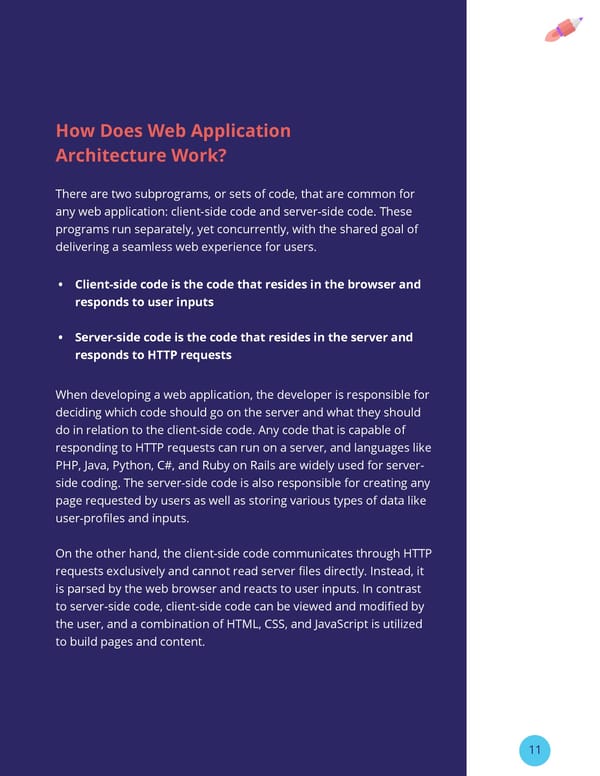How Does Web Application Architecture Work? There are two subprograms, or sets of code, that are common for any web application: client-side code and server-side code. These programs run separately, yet concurrently, with the shared goal of delivering a seamless web experience for users. • Client-side code is the code that resides in the browser and responds to user inputs • Server-side code is the code that resides in the server and responds to HTTP requests When developing a web application, the developer is responsible for deciding which code should go on the server and what they should do in relation to the client-side code. Any code that is capable of responding to HTTP requests can run on a server, and languages like PHP, Java, Python, C#, and Ruby on Rails are widely used for server- side coding. The server-side code is also responsible for creating any page requested by users as well as storing various types of data like user-profiles and inputs. On the other hand, the client-side code communicates through HTTP requests exclusively and cannot read server files directly. Instead, it is parsed by the web browser and reacts to user inputs. In contrast to server-side code, client-side code can be viewed and modified by the user, and a combination of HTML, CSS, and JavaScript is utilized to build pages and content. 11
 The Non-Technical Founder's Guide to Building an App | CrowdBotics Page 10 Page 12
The Non-Technical Founder's Guide to Building an App | CrowdBotics Page 10 Page 12